News
The Making of Cujo: Author Lee Gambin Talks New Book
Based on Stephen King’s 1981 novel, the 1983 rabid dog horror film Cujo was just one of three King film adaptations to arrive that years. Cujo was joined by Christine, and the best King film adaptation in the decade, The Dead Zone. A modest box office success, Cujo has, like so many genre films from the 1980s, enjoyed an enthusiastic during its post-theatrical afterlife, which has spanned over a third of a century.
Now author and film historian Lee Gambin has written a book, titled Nope, Nothing Wrong Here: The Making of Cujo, which details the making of the film. I had the chance to talk to Gambin about his reasons for writing this book, which will be published by BearManor Media. The book can be preordered at the publisher’s website.

DG: What inspired you to write a book about the making of the film Cujo?
LG: I have always loved the film – and the book. I feel that the movie is an incredibly well made, tight, solid motion picture and on top of that, one thing I really admire about it, is its complexity hidden within the very straight forward deceptively “simplistic” story. I wanted to examine all the aspects of this in the book, and on top of that of course find out everything about the production. Also, a lot of work I had done leading up to starting work on the book had something to do with Cujo. For example, I wrote a book on eco-horror movies called Massacred By Mother Nature: Exploring the Natural Horror Film, and in that I write on Cujo. And then there was/is my connection to Dee Wallace – during very early days of mapping out the book I worked with Dee as part of Monster Fest here in Melbourne. So these elements all helped pave the way to working on this book which is an exhaustive exploration into the film – from a “making of” perspective with an academic angle as well.
DG: What was your plan for writing the book, and how did this evolve and unfold as you moved deeper into the writing process?
LG: I had just completed a book all about the making of The Howling, and that really dictated how I set out to write the book on Cujo. The way I structured The Howling book was to go scene by scene and integrate quotes from the mammoth amount of interviews I got for it. I decided this was a beautiful way to go – to really dissect and critically examine the narrative makeup, thematic ingredients, character and the mythic qualities of the film as well as giving a voice to the people who worked on the film. Cujo is exactly set up in the same way.
DG: What are the themes of Cujo that you wanted to explore with this book?
LG: There are so many incredible themes weaved within the fabric of Cujo – there is the concept of the disturbance in nature, domestic unrest, infidelity, human suffrage, alienation, the Three Days of Darkness, the “woman in the storm” archetype, redemption, the monster imagined and real. I mean, this film has so much depth and intelligence, and there is truly a lot to explore. Outside of all that, there are the dozens of interviews that are truly candid and generous, so the production element to the book is massive. I really do feel this is an ultimate in making of books – I’m pretty proud of it. I really tried to leave no stone unturned.
DG: What was the biggest challenge in writing the book?
LG: The fact that there were a lot of people who are no longer with us that would have been amazing to have on board. For example, the screenwriter Barbara Turner passed away the month before I started work on the book (as in gathering the interviews), and that was sad because she was so integral. Also, the editor, Neil Machlis, who did such a superb job, is no longer alive, so it would have been amazing to have his input. But I feel over thirty interviews with a bunch of Cujo alumni is healthy to say the least!
DG: Whom did you interview for the book?
LG: Dee Wallace, Lewis Teague, Danny Pintauro, Daniel Hugh Kelly – so many people. Gary Morgan is a wonderful storyteller; he was the guy in the dog suit! Also Teresa Ann Miller shared stories about her father, animal trainer Karl Lewis Miller, so it was lovely to hear all about the St. Bernards used for the film. Robert and Kathy Clark are in there, and they were part of the SFX team, so there is some excellent stuff discussing the animatronic dog, the puppet head, the dog head that would be used to propel into the Pinto door and so much more. I also interviewed people such as Danny Pintauro’s mother, who was on set throughout the shoot, people involved with the film before Lewis Teague came on board such as originally assigned director Peter Medak (which is the first ever time he has talked about this) and his DOP Tony Richmond. There are a lot of people in here.

DG: Tell me something about the film that I wouldn’t know unless I read this book?
LG: Oh there are a lot of things that I am sure even the most hardened fan wouldn’t know. One thing that really surprised me was the fact that there was a deleted scene that actor Robert Craighead talked to me about. It occurs just before Kaiulani Lee’s character tells Ed Lauter that she has won the lottery and moments before Ed finds the engine hoist in his garage. Craighead plays a delivery man who, along with his partner, drops off the machinery, only to come across an agitated Cujo who leaps up and scares them. This is before the rabies virus has really gotten its grip on the poor pooch, so he is still confused by it all. Craighead told me that Lewis Teague thought that the scene played out to “light”, and that it would throw the audience, seeing that Cujo is such a straight film with a steady serious tone. The scene had Craighead and his partner speed off in their delivery truck, one of them flipping the bird to the St Bernard. I have a great still from it that will be featured in the book.
DG: Lee, when you look back at the writing of this book, is there one memory – or one anecdote that was given to you by an interview subject – that stands out in your mind when you recall this process?
LG: Good question – but in all honesty, most of the interviewees have provided amazing insight that will stick with me forever. One thing that I have to say that means a lot to me is the fact that in some small way, I have bridged a thirty plus year gap between Peter Medak and Lewis Teague. Medak told me that he refused to watch the film after he was fired from the project (this was the only film he was ever fired from – he had walked off movies such as major projects involving the likes of Barbra Streisand and Sean Connery, but this was the first he was fired from). But then in the evening before I interviewed him, he watched the film and was completely impressed. When I talked to him, he told me to pass on congratulations to Lewis Teague. I did this, but I did something more. I introduced the two men, and all resentment was put to rest after all these years. It was pretty special.
DG: Lee, when I think of Cujo, I think of the crowd of Stephen King film adaptations that appeared from the early 1980s on. Cujo was just one of the three King adaptations that were released in 1983, along with Christine, and, of course, The Dead Zone, which many, including myself, believe is one of the best of the King film adaptations. Question: What do you think sets Cujo apart from the rest of the King film adaptations from this time period?
LG: It – 1983 – was a wonderful year for King adaptations, most certainly. There were three superb directors working on these films – John Carpenter, David Cronenberg and, of course, Lewis Teague – as well as brilliant horror affiliates on each film such as Debra Hill and Dee Wallace etc. But the thing that separates Cujo from films like Christine and The Dead Zone is the fact that it is a horror film grounded in reality. Cujo is one of those rare Stephen King stories (Misery comes to mind also) that doesn’t rely on supernatural horror – there is no telekinetic teen or haunted house or vampires or killer cars. Instead it is simply a story about a woman trapped by her own personal situation and then eventually trapped by a rabid 200 pound St. Bernard.

DG: Lee, besides your interviews, what additional materials did you gather for this book, namely pictures, and how did you find all of this?
LG: Lots of research was involved, but most of it was a case of sourcing materials from interviewees themselves.
DG: Lee, every film production has a story, an overarching conflict or rhythm that defined the making of the film. Question: What was the mood like during the filming, between the cast and crew, and were there any major conflicts that arose during the filming?
LG: Cujo was a very, very complicated shoot. There were tensions, arguments galore, a lot of miscommunication and hostility. However, on the flipside of that, there was a lot of love, support, solidarity, care, compassion and unity. I guess it depends on whom you ask! A lot of the interviewees seem to have an issue with DOP Jan de Bont – who never responded to requests, and therefore is someone actively missing from the book. It was amazing to hear from both aspects of the argument and to hear how different people preferred to work – for example, Daniel Hugh Kelly hated the fact that Barbara Turner’s screenplay was being pushed aside for Don Carlos Dunaway’s rewrites, while Dee Wallace preferred the “less is more” approach to the film in regards to the dialogue aspect.
DG: Lee, was there any thought given to killing off the Tad character in the film, in keeping with the book, and were there any other story elements that were discarded prior to the start of filming?
LG: Dee Wallace had a lot of dramaturgical input for this production and someone as generous and perceptive as Lewis Teague took this on board. One of those things was the killing of Tad. She was adamant that the child not die, and Stephen King himself agreed. His original draft for the screenplay had Tad survive the siege. As far as other story elements, there were primarily two that were dropped – one was the link between The Dead Zone and Cujo where the dog would be “considered” to be a reincarnation of the Frank Dodd character (the killer in The Dead Zone). This was toyed around with and plotted by Barbara Turner in her draft of the screenplay. Peter Medak loved this idea. The two of them worked on concepts together.
Turner’s screenplay would therefore somewhat have a supernatural element to it. This is something that Teague would drop completely when he took over the film. When Medak was fired, Turner was so hurt that she told the studio to change her name in the credits to Lauren Currier, and her work on the supernatural subplot was completely omitted. However, all of the siege sequence is all of her writing.
The second major story element that was made miniscule in the final film was the relationship between Ed Lauter and Kaiulani Lee’s characters – Joe and Charity Camber. Plus there was stuff originally in there involving the cereal scare and so forth. But yes, the film became much leaner in final execution.
DG: Ultimately, Lee, what is the story of this book, the impression that you think readers will be left with, in regards to the film, the making of the film, and the time period in which it was made?
LG: I think anyone interested in film history will love hearing the stories from the set. I think it is a really amazing condensation of mixed feelings and a perfect example of the creative process, the creative experience, and how artists tick.
Preorder Nope, Nothing Wrong Here: The Making of Cujo here.
'Civil War' Review: Is It Worth Watching?
Follow our new YouTube channel "Mysteries and Movies" here.

Movies
‘Longlegs’ Creepy “Part 2” Teaser Appears on Instagram
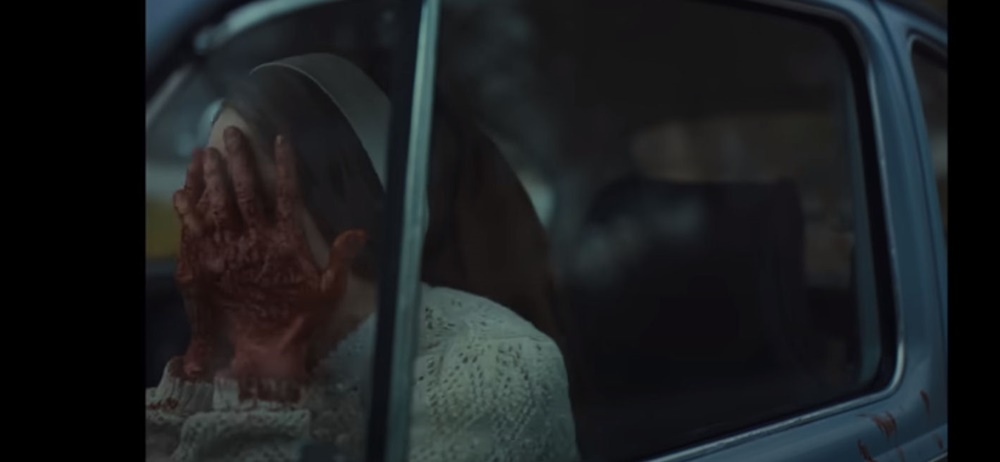
Neon Films released an Insta-teaser for their horror film Longlegs today. Titled Dirty: Part 2, the clip only furthers the mystery of what we are in for when this movie is finally released on July 12.
The official logline is: FBI Agent Lee Harker is assigned to an unsolved serial killer case that takes unexpected turns, revealing evidence of the occult. Harker discovers a personal connection to the killer and must stop him before he strikes again.
Directed by former actor Oz Perkins who also gave us The Blackcoat’s Daughter and Gretel & Hansel, Longlegs is already creating buzz with its moody images and cryptic hints. The film is rated R for bloody violence, and disturbing images.
Longlegs stars Nicolas Cage, Maika Monroe, and Alicia Witt.
'Civil War' Review: Is It Worth Watching?
Follow our new YouTube channel "Mysteries and Movies" here.
News
Exclusive Sneak Peek: Eli Roth and Crypt TV’s VR Series ‘The Faceless Lady’ Episode Five
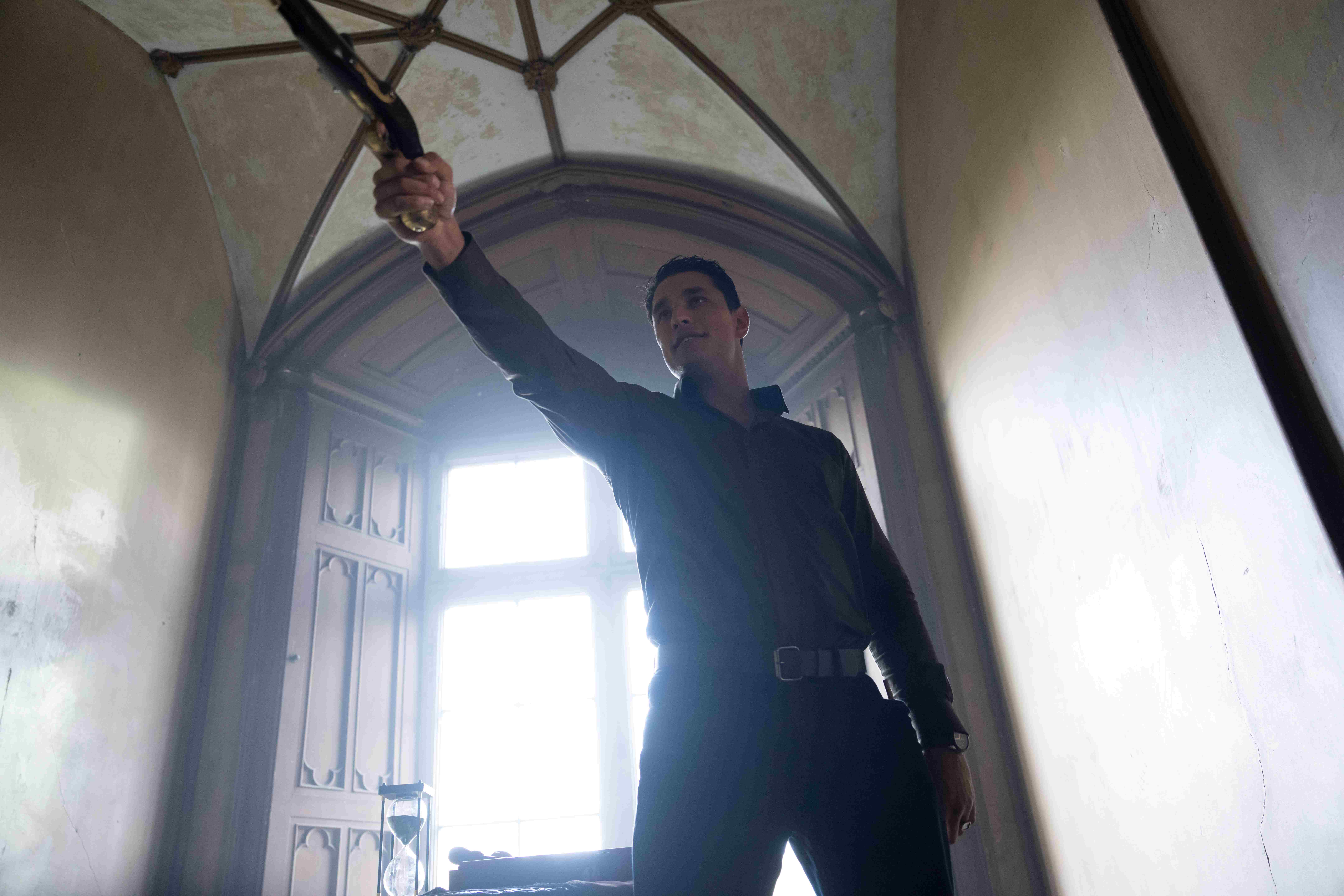
Eli Roth (Cabin Fever) and Crypt TV are knocking it out of the park with their new VR show, The Faceless Lady. For those unaware, this is the first fully scripted VR horror show on the market.
Even for masters of horror like Eli Roth and Crypt TV, this is a monumental undertaking. However, if I trust anyone to change the way that we experience horror, it would be these two legends.

Ripped from the pages of Irish folklore, The Faceless Lady tells the story of a tragic spirit cursed to wander the halls of her castle for all of eternity. However, when three young couples are invited to the castle for a series of games, their fates may soon change.
So far, the story has provided horror fans with a gripping game of life or death that doesn’t look as if it will slow down in episode five. Luckily, we have an exclusive clip that may be able to satiate your appetites until the new premiere.
Airing on 4/25 at 5pmPT/8pmET, episode five follows our final three contestants in this wicked game. As the stakes are raised ever higher, will Ella be able to fully awaken her connection with Lady Margaret?
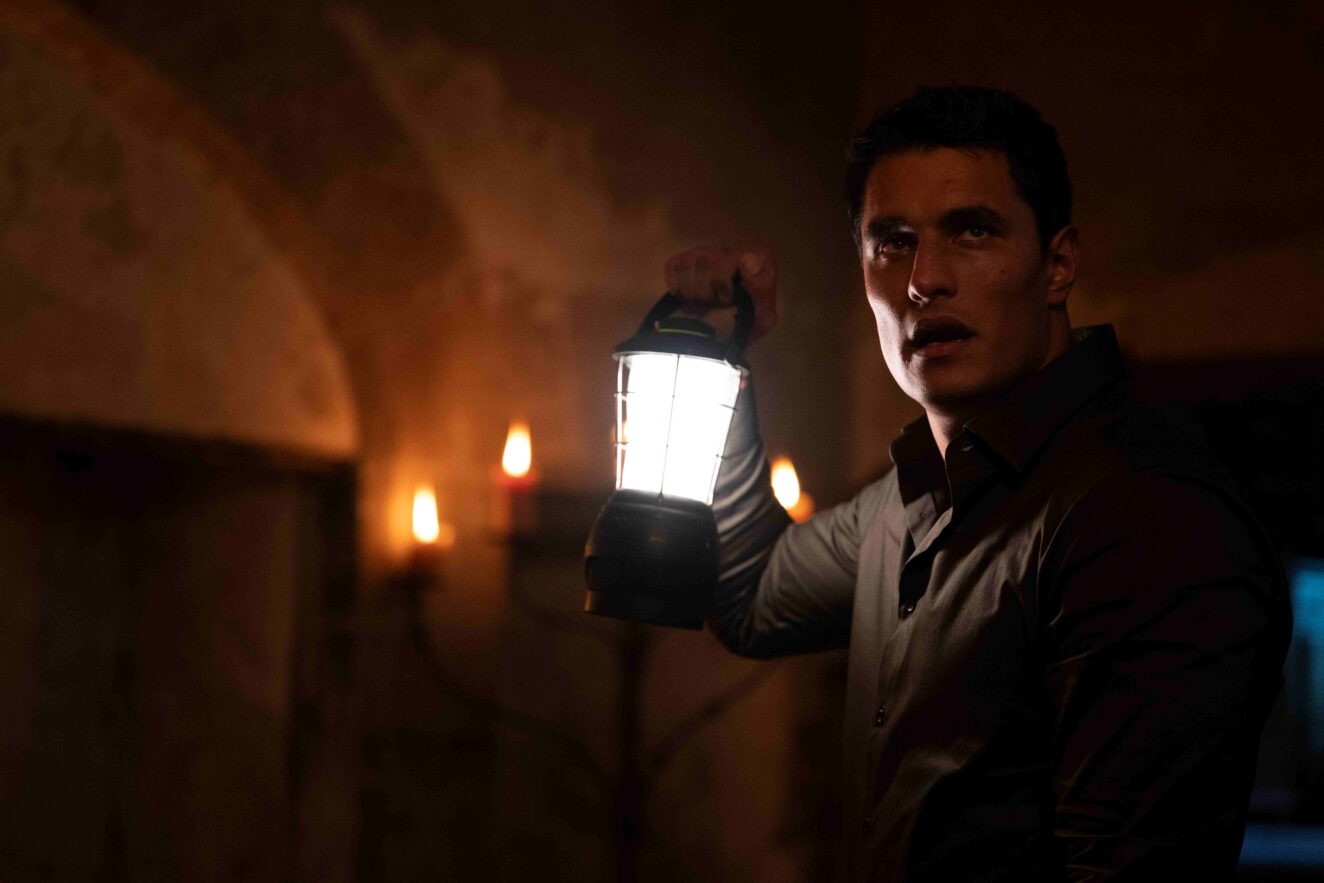
The newest episode can be found on Meta Quest TV. If you haven’t already, follow this link to subscribe to the series. Make sure to check out the new clip below.
Eli Roth Present’s THE FACELESS LADY S1E5 Clip: THE DUEL – YouTube
'Civil War' Review: Is It Worth Watching?
Follow our new YouTube channel "Mysteries and Movies" here.
News
‘Blink Twice’ Trailer Presents a Thrilling Mystery in Paradise

A new trailer for the movie formerly known as Pussy Island just dropped and it has us intrigued. Now with the more restrained title, Blink Twice, this Zoë Kravitz-directed black comedy is set to land in theaters on August 23.
The film is packed with stars including Channing Tatum, Naomi Ackie, Alia Shawkat, Simon Rex, Adria Arjona, Haley Joel Osment, Christian Slater, Kyle MacLachlan, and Geena Davis.
The trailer feels like a Benoit Blanc mystery; people are invited to a secluded location and disappear one by one, leaving one guest to figure out what is going on.
In the film, a billionaire named Slater King (Channing Tatum) invites a waitress named Frida (Naomi Ackie) to his private island, “It’s paradise. Wild nights blend into sun-soaked days and everyone’s having a great time. No one wants this trip to end, but as strange things start to happen, Frida begins to question her reality. There is something wrong with this place. She’ll have to uncover the truth if she wants to make it out of this party alive.”
'Civil War' Review: Is It Worth Watching?
Follow our new YouTube channel "Mysteries and Movies" here.
-

 News6 days ago
News6 days agoWoman Brings Corpse Into Bank To Sign Loan Papers
-

 News5 days ago
News5 days agoBrad Dourif Says He’s Retiring Except For One Important Role
-

 Strange and Unusual5 days ago
Strange and Unusual5 days agoMan Arrested for Allegedly Taking a Severed Leg From Crash Site And Eating It
-

 Movies6 days ago
Movies6 days agoPart Concert, Part Horror Movie M. Night Shyamalan’s ‘Trap’ Trailer Released
-

 Movies6 days ago
Movies6 days agoAnother Creepy Spider Movie Hits Shudder This Month
-
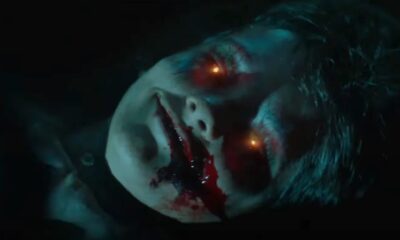
 Movies7 days ago
Movies7 days agoRenny Harlin’s Recent Horror Movie ‘Refuge’ Releasing in U.S. This Month
-
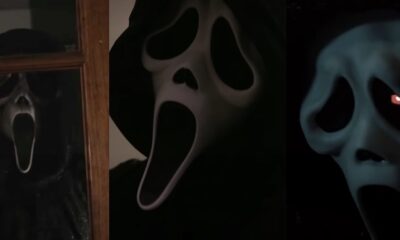
 Editorial5 days ago
Editorial5 days ago7 Great ‘Scream’ Fan Films & Shorts Worth a Watch
-
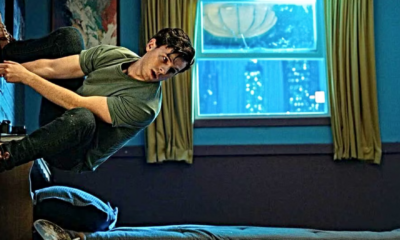
 Movies4 days ago
Movies4 days agoSpider-Man With a Cronenberg Twist in This Fan-Made Short
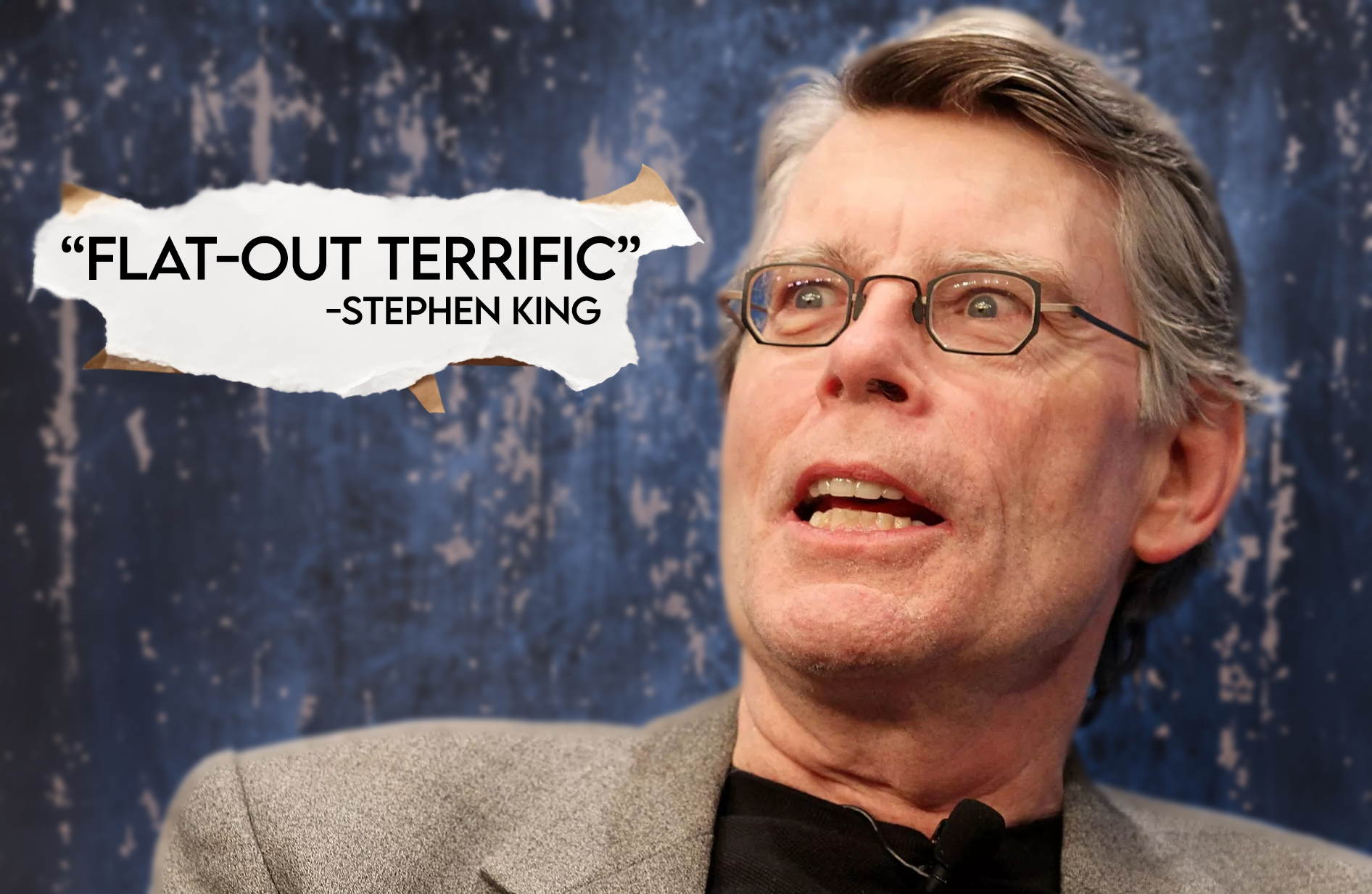
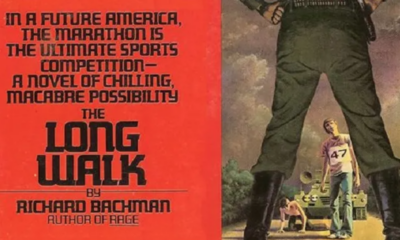
























You must be logged in to post a comment Login